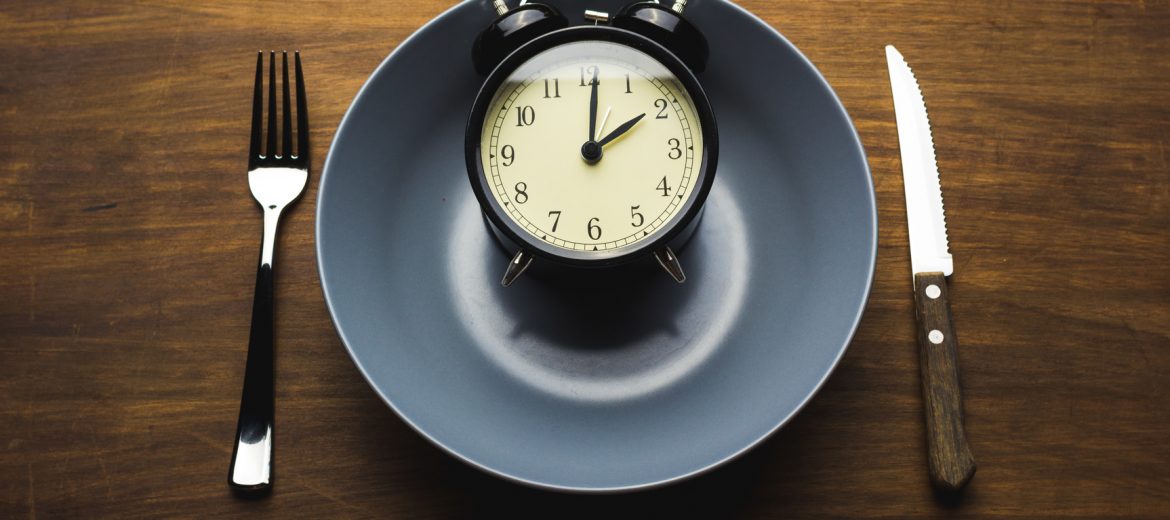My husband loves fasting, but it makes me moody and anxious!
Yep, this is pretty standard when it comes to fasting and diets. Over the past few years practising naturopathy and nutrition. I’ve have had many women come to me complaining of anxiety, crankiness and insomnia.
When I’ve tested my client’s hormones after they have been fasting for a long time. I find cortisol through the roof. Elevated cortisol leaves them feeling emotionally wired, bloated, constipated and sluggish.
When delving deep into each case. I discovered the common theme was these women were following a new trend of fasting. Either intermittent fasting, 5:2 diet or even following a high protein and no starch diet.
As women, your hormone makeup is a little more sensitive than that of a man’s. You need different raw materials in your diet to get everything working. One of these raw materials is starch from sweet potato, pumpkin, berries, legumes and rice. Not much mind you, but some during the day.
Demystifying Fasting
I want to demystify the whole ‘fasting’ debate and help you make the right decision for you right now. Because we are all different and one method won’t suit us all.
If you prefer watching a video, you can check out my Facebook live.
This first video is an overview of fasting; it’s benefits and some of the problems fasting poses.
Fasting For Health
Fasting is an excellent tool to use therapeutically. By that, I mean it can be used for certain illnesses and chronic diseases with a particular outcome in mind.
Mentioned in the Facebook Live, Fasting is excellent for the brain and brain healing. Those with conditions such as dementia, Alzheimer’s, brain tumours might benefit from fasting, particularly if they get into ketosis (Newport et al. 2015)
But, fasting isn’t the solution for everyone.
Popular Fasts
5:2 diet
Intermittent fasting
Meal skipping
Alternate-day fasting
Eat Stop Eat
Night time fasting of 15 hours (my fave)
One day per week fast
And of course, my recommend fast ‘Macro Nutrient Fast.’
Benefits of Fasting
Supporting insulin resistance
Getting into Ketosis(Herdt 2009)
Balancing appetite hormones ghrelin & leptin
Anti-ageing
Preventing Alzheimers
Weight Loss
Muscle and strength gain
Reduction in LDL and triglycerides
Elevate IGF1 (Good for autoimmune conditions, menopause, not so good for some cancers)
Ketosis
One of the most therapeutic benefits of fasting is getting into ketosis. Ketosis is when the glycerol reserves deplete; the liver starts producing ketone bodies. Ketone bodies are short-chain derivatives of fatty acids. These ketone bodies cross the blood–brain barrier. As they cross the BBB they can be an alternative metabolic fuel. The direct fuel would explain the clarity of thinking when you get into fasting. Many people report better memory and clearer thinking.
Longevity
Along with weight loss, longevity is another big benefit of fasting. (Saey 2012)
Sirtuins are proteins produced under the stress of starvation. Insulin sensitivity increases along with increased DNA repair. This DNA repair can help over time with the ageing process not only physically but mentally. It is good to remember these beneficial proteins are those produced under starvation. Any fast is a stress on the body, you need to be careful when you do a fast. If you are trying to fall pregnant, it’s not the best time to put the body under stress.
If you are prone to reduced stress adaptation, then fasting followed by intense exercising would elevate cortisol and lower sex hormones. So fasting when you are relaxed would be the best for you. Sleeping is when you are most relaxed!
Cancer
Some studies state fasting (mainly getting into ketosis) (Al Moustafa 2012) can help fight cancer and reduce tumours. But at the same time, fasting elevates IGF1 which is a growth hormone and can cause excessive growth. If you have any history of mucosal cancers such as bowel, endometrial or cervical. Get your IGF1 checked to ensure this isn’t an issue for you. Any rise in growth hormone can cause excessive growth both good or bad.
Multiple Sclerosis (MS)
The Dr Terry Wahls Protocol http://terrywahls.com/ is a therapeutic protocol for those suffering from MS. Dr Terry Wahls herself used the protocol to stop the progression. She went from wheelchair bound to running again. Dr Terry Whals protocol is an excellent example of how to use diets as medicine. What’s so wonderful about her program is the high vegetable content. Many fasts or high protein leave out the importance of greens.
Fasting and Female Hormones
Women are much more sensitive to changes in the environment, internally and in the diet than men are. This sensitivity means that if you already have imbalanced hormones fasting could do more harm than good. At first when fasting the level of insulin in circulation drops and the levels of glucagon, adrenalin and noradrenalin rise.
This hormone change can be a good thing for some. Yet those with already elevated testosterone and adrenalin could find symptoms getting worse. Studies show that fasting elevates testosterone, so potentially fasting could cause issues in conditions such as ‘Polycystic ovarian syndrome’ (PCOS).
Hormones which elevate during fasting are:
Testosterone
Luteinizing Hormone
Cortisol
I suspect oxytocin and progesterone decrease? But more research is required. It’s just my theory at the moment.
How to make fasting work for you?
If you have decided to follow a fast, my recommended would be 16:8 or macronutrient fasting.
But, if you want to do the 5:2 diet? Don’t make the mistake of eating the wrong things or going into calorie deficit.
The 5:2 diet restricts calories to around 600 per day for 6 out of 7 days. You can have three small meals on this day comprising of lots leafy greens, some healthy fat and protein.
For example, this could be a day at around 600 Calories. You’ll be getting all your nutrients and giving your body enough macros to fuel your day. With an array of different foods and lots of vegs. You can see it is hard to get your 6-9 cups of veg daily with this plan.
I don’t subscribe to calorie counting it’s an outdated method of eating as not all macronutrients are created equally.
A great example is this:
40 grams pasta = 80 calories
½ avocado = 120 calories
The avocado has more nutrition and better for your metabolism.
Eating 5:2
Breakfast 290 calories
½ avocado (120 calories)
1 cup broccoli (30 calories)
One chicken thigh (130 calories)
Lunch 90 calories
100 grams green veg (20 calories)
1 cup cucumber (10 calories)
½ cup black olives (10 calories)
1 tablespoon pumpkin seeds (50 calories)
Dress with lemon and a pinch salt
Dinner 270 calories
½ cup roasted sweet potato cooked in butter (150 calories)
100 grams Cod (100 calories
100 grams leafy veg (20 calories)
Intermittent fasting
With intermittent fasting, it can be easier to get your 6-9 cups veg daily. You just load up at lunch and dinner.
My favourite intermittent fasting is the 16:8 this means you can fast from dinner at about 7 pm and eat again about 11 am or 12 pm. I love this because you are resting and sleeping, so no toll on your body while you have no food. You should still drink water when you get up in the morning to ensure you keep hydrated. The 16:8 fast is by far the healthiest fast for women. 16:8 has minimal negative impact on digestion, metabolism and nervous system.
An example of how you could make this fast work for you so that you have calm, focused energy not negative hyper energy.
12pm Meal
½ cup roasted pumpkin in coconut oil herbs and salt
3 cups of cooked non-starchy veg of choice
120 grams of protein (2 lamb cutlets or 2 chicken thighs)
4PM Snack
Carrot and celery sticks with guacamole/crakers with chicken liver pate
6PM Meal
Vegetable and chicken soup (slow cooked to get all the juicy bits of the bone)
My recommended fast
I love macronutrient fasting. Here’s how you can do a starch fast plan.
9 am Breakfast (non-starch)
½ avocado
2 cups of mixed veg sauteed in butter
1 tablespoon sauerkraut
1 organic beef sausage / or 2 eggs
4-hour window of not eating
1pm Lunch
100 grams salad leaves
2 cups mixed cucumber, capsicum and celery
½ cup seeds
½ cup roasted sweet potato
½ avocado
½ cup shredded chicken
6-hour window only snack if you are hungry
6pm Dinner
A Large bowl of chicken and vegetable soup.
You see there are lots of ways to make fasting work for you so that you give your digestive tract a much-needed break. Try a few of things out and see what works for you.
The aim is to feel:
- Energised
- Calm
- Focused
- Have no cravings
- Not feel scattered of anxious
Keep experimenting and tweaking to find the best method to suit you.
Your Menstrual Cycle
Depending on your hormone balance you might find a few things happen during your cycle. This means you’ll need to adjust food output.
During the second half of your menstrual cycle you might need more starchy carbs, so feel free to add in a meal or have a love grain free bircher muesli with coconut yoghurt and berries.
I hope you found this helpful. For more on this, you can check out Alexx Stuart Low Tox Podcast HERE. Alexx interviewed me on the benefits and risks associated with fasting for women.
References



